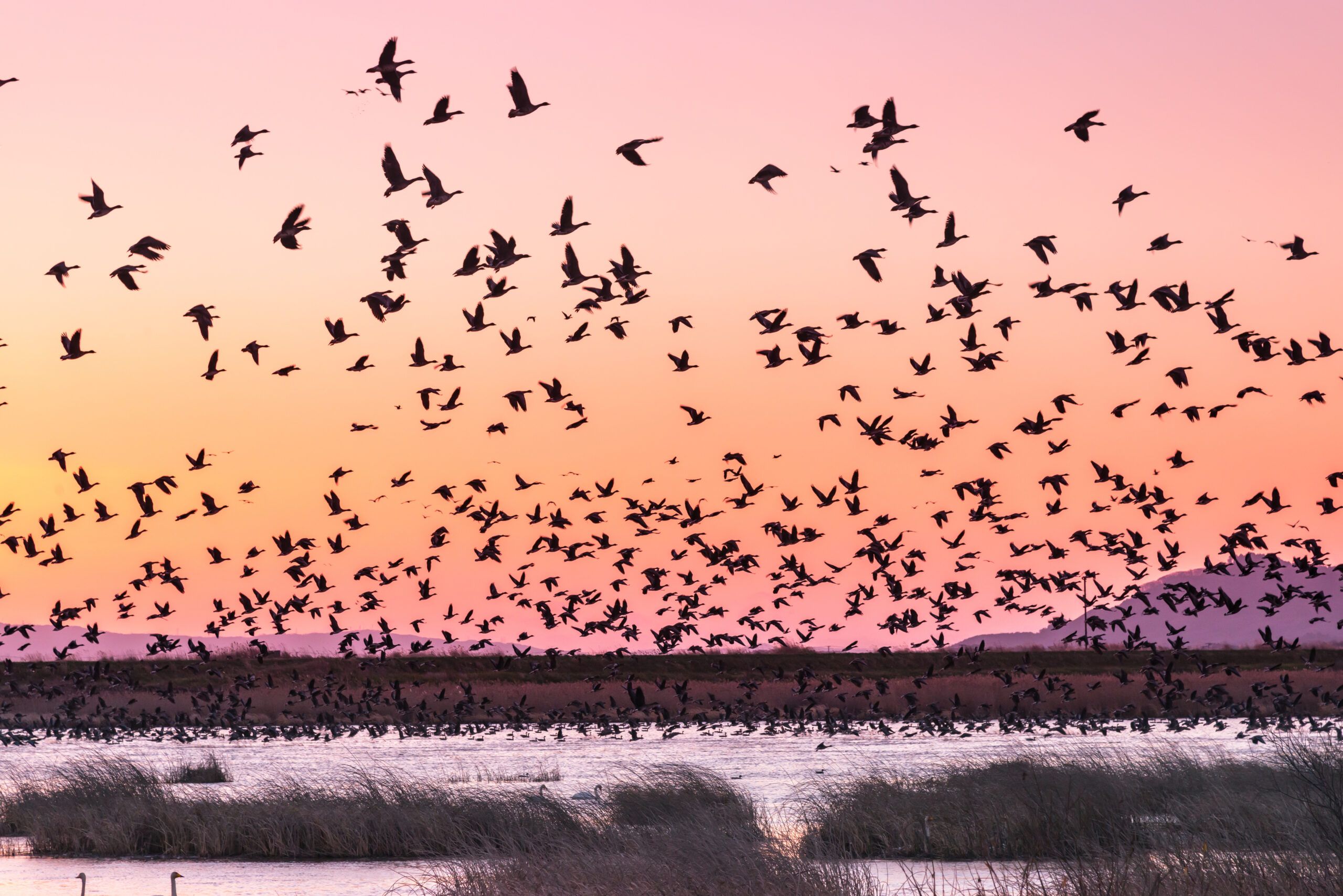By Kakhi Jordania
Watching the Skies with New Eyes
For as long as I can remember, I have watched the skies over Georgia. As a child growing up near Tbilisi, I would sit on the hills with my grandfather, a falconer, and watch hawks, falcons, and eagles soar above the Caucasus Mountains. Their flight seemed effortless, yet full of purpose. Back then, we relied on instinct, weather patterns, and our own eyes to understand these magnificent birds. Today, I still watch the skies—but now, I also watch them through satellite maps and data screens.
Satellite technology has completely changed the way we understand migratory birds. What once seemed like a mystery—where they go, how far they travel, and what dangers they face—can now be traced in real time. This technology is not just fascinating. It’s saving lives, protecting species, and reshaping how we approach conservation across continents.
The Long Journey of Migratory Birds
The Caucasus region is one of the most important migratory corridors in the world. Every spring and autumn, hundreds of thousands of birds pass through our mountains, following ancient routes that connect Africa, Europe, and Asia. These are not short trips. Some falcons and eagles travel thousands of kilometers, crossing deserts, seas, and borders to reach their breeding or wintering grounds.
For centuries, falconers and villagers here have admired their endurance and grace, but we never fully understood their journeys. Many birds would vanish after the season, and we could only guess where they went. Today, with satellite telemetry, we can follow them from nest to migration and back again. Each tiny tracker attached to a bird becomes a window into its life—a story told in lines across a digital map.
From Curiosity to Conservation
When I first started using satellite tracking about a decade ago, it felt like stepping into another world. We placed small GPS transmitters on young eagles before releasing them. Within weeks, we were receiving updates of their travels across the Black Sea and deep into the Middle East. One juvenile imperial eagle flew as far as Sudan, stopping briefly in Turkey and Syria. Seeing that data for the first time felt like magic.
But the magic quickly turned into purpose. The more we tracked, the more we realized how many threats these birds face: power lines, illegal hunting, habitat loss, and poisoned bait. The satellite data showed us where these dangers were concentrated. It gave us concrete information we could take to governments, conservation organizations, and communities.
This was the turning point for me and for many others. Falconry has always taught patience, discipline, and respect for birds. Now, technology gave us the tools to protect them beyond the glove—to safeguard their entire journey.
Cooperation Across Borders
Migratory birds don’t recognize national boundaries, and that means conservation efforts can’t stop at them either. Tracking data has connected scientists and bird lovers from all over the world. Georgian researchers now collaborate with colleagues in Turkey, Israel, and even as far as Kenya and Saudi Arabia.
Through this cooperation, we share data and resources, helping identify critical habitats and migration bottlenecks. For instance, we discovered that some of our tagged eagles spend winters in protected wetlands in Africa. Knowing this allowed us to reach out to conservationists there and coordinate efforts to keep those areas safe.
This kind of collaboration is what gives me hope. It shows that even though we live in a divided world, the natural migrations of birds remind us how deeply interconnected we truly are.
Technology Meets Tradition
Some people worry that technology takes the soul out of ancient practices like falconry. I understand that fear. Falconry, at its heart, is about a direct relationship between human and bird—one built on trust, instinct, and respect. No computer can replace that.
But I see technology as an extension of our stewardship. It allows us to protect what falconry has always cherished: the harmony between humans and nature. By combining traditional knowledge with scientific innovation, we can honor our heritage while adapting to the realities of the modern world.
When I look at the data from a satellite tag, I don’t see just numbers and coordinates. I see the spirit of a bird I might have once held on my glove, now free and wild, soaring over landscapes I may never visit. It reminds me that our duty as falconers and conservationists extends far beyond our local hills—it stretches across continents and generations.
Looking Toward the Future
The success of satellite tracking has inspired new ideas and projects. We are now working to expand tracking to smaller species like kestrels and harriers, using lighter transmitters that do not interfere with their flight. Schools and youth programs are also getting involved, following tracked birds online and learning about ecology through real-time migration data.
It fills me with pride to see young people in Georgia and beyond take an interest in conservation. They are growing up in a world where technology is part of their daily lives, and they can use it to protect the planet rather than harm it.
Conclusion
Falconry taught me to watch the skies with reverence. Satellite technology taught me to watch them with understanding. Together, they have deepened my respect for the fragile, extraordinary lives of migratory birds.
Every time I see a dot move across the digital map, I think of the vast landscapes that bird is crossing—the mountains, deserts, and rivers it must face. I think of how far we have come in understanding their journeys, and how much more we still must do to keep those skies safe.
For me, tracking the skies is not just science. It is a continuation of an ancient promise: to protect the bond between humans and the wild, and to ensure that every wingbeat still finds its way home.
